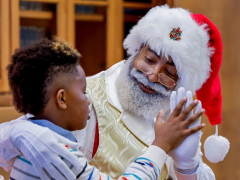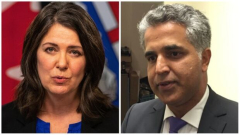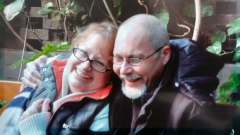But, as Moss would learn, the figure of Santa Claus was more than a pathway to visibility and acceptance. The holiday legend wielded vast economic power.
By 1960, Moss had completed his master’s in divinity at Morehouse and was studying theology at a nearby seminary in Atlanta. But in his spare time, he was deeply enmeshed in the student-led protest movement brewing across the city.
The experience gave him a firsthand view of how Christmas could be a season of protest.
“We ended up organising protests and picketing during the Christmas season,” Moss recalls, as students pushed to desegregate lunch counters and stores.
The movement aimed to make a dent in the businesses’ pocketbook: One of the rallying cries was to “bankrupt the economy of segregation”.
By the end of the year, sales in downtown Atlanta had fallen by approximately 13 percent compared with the year prior. The Christmas boycotts were credited with costing $10m in sales.
The student protesters, meanwhile, launched their own efforts to generate Christmas profits. They sold “Freedom Christmas cards”, netting more than $4,000 in sales — or nearly $43,000 in today’s money.
Moss saw his participation in the Christmastime movement as part of an “inheritance” of non-violent protest.
After all, the Montgomery bus boycott of 1955 had begun during the year-end holiday season. And later, in 1963, after white supremacists planted a bomb that killed four young girls, civil rights leaders called for a “Black Christmas” protest, with shoppers abstaining from holiday spending as a show of mourning.
Moss himself remembers being on the picket line, carrying a sign that read “Jim Crow Must Go”, when he was recruited to lead a chur





